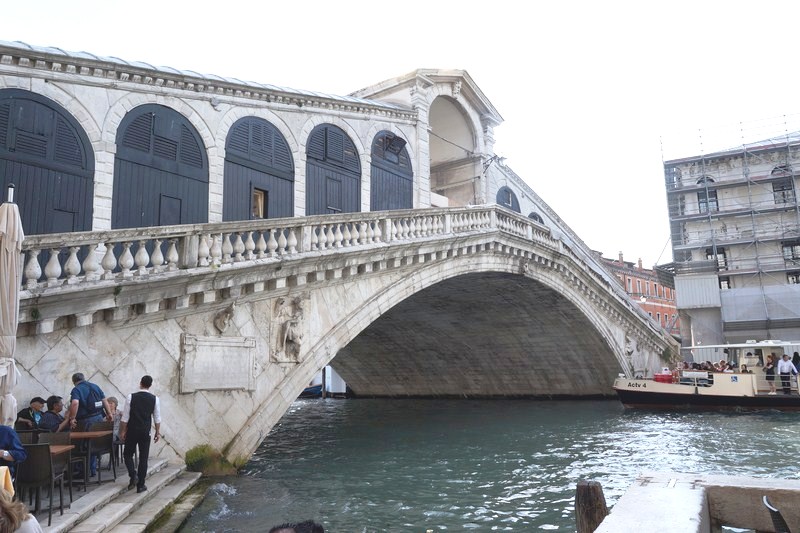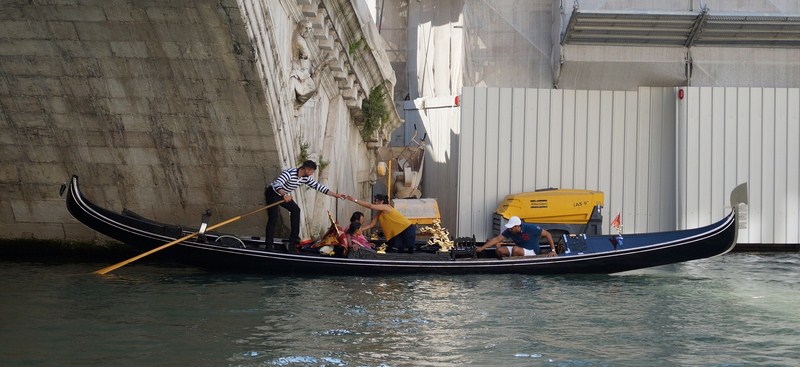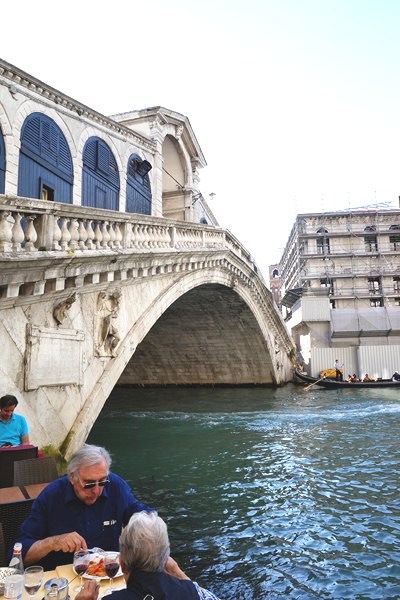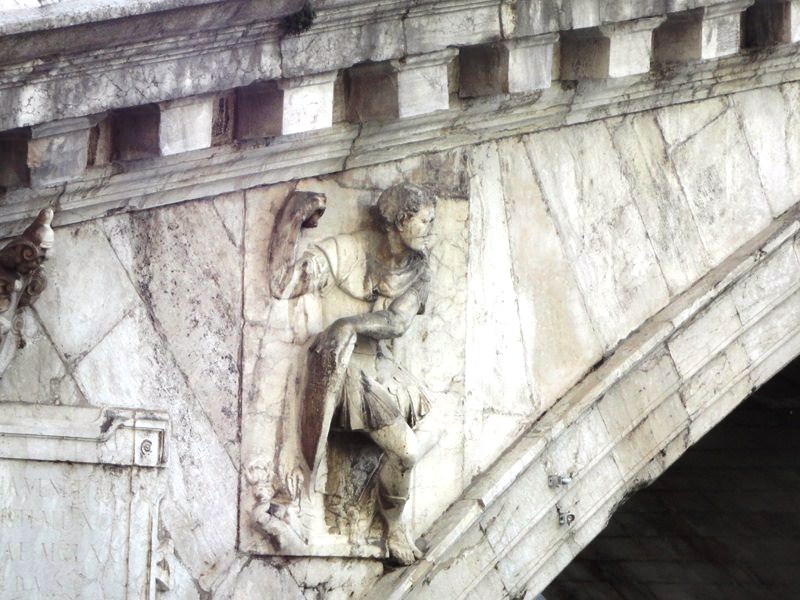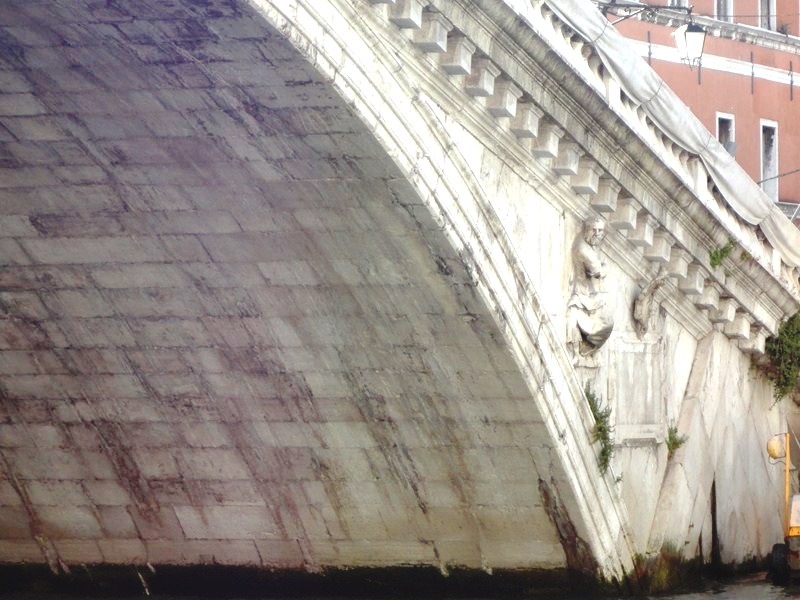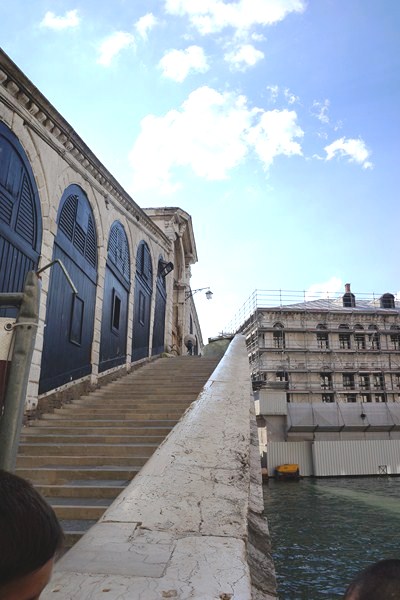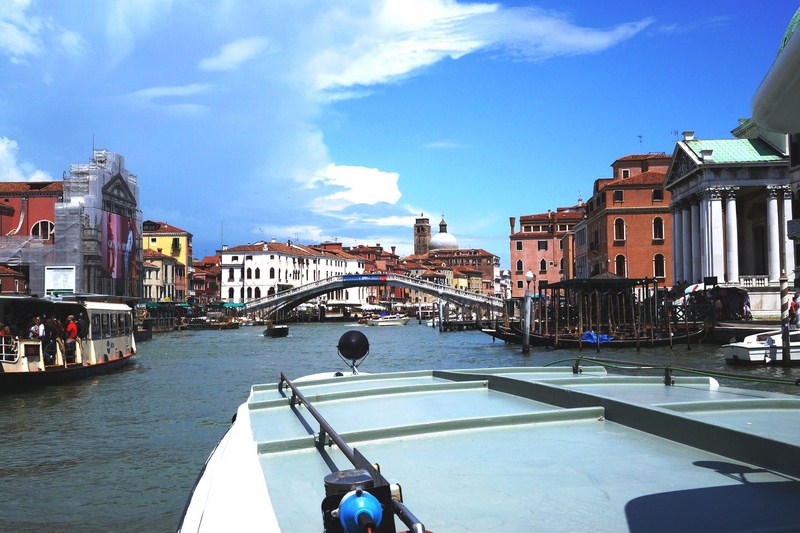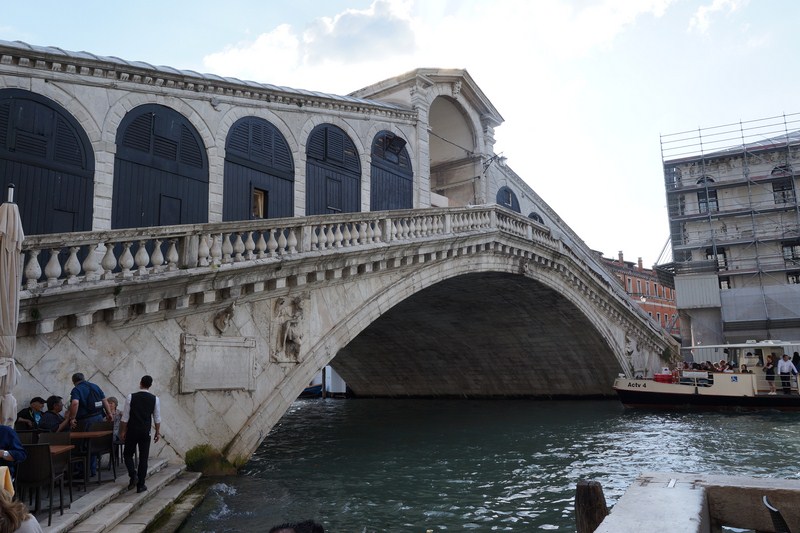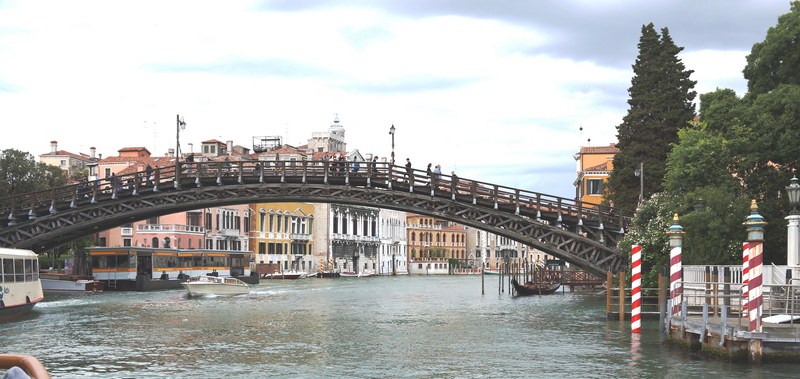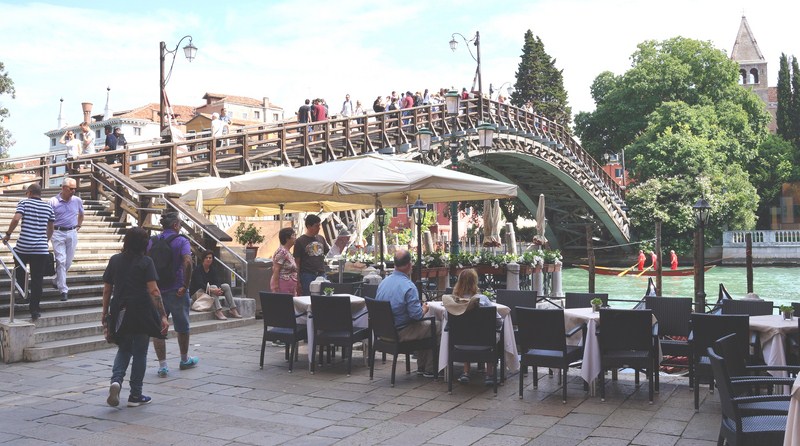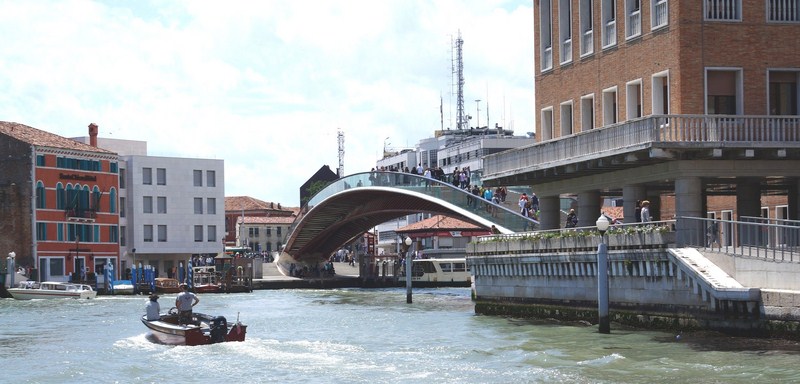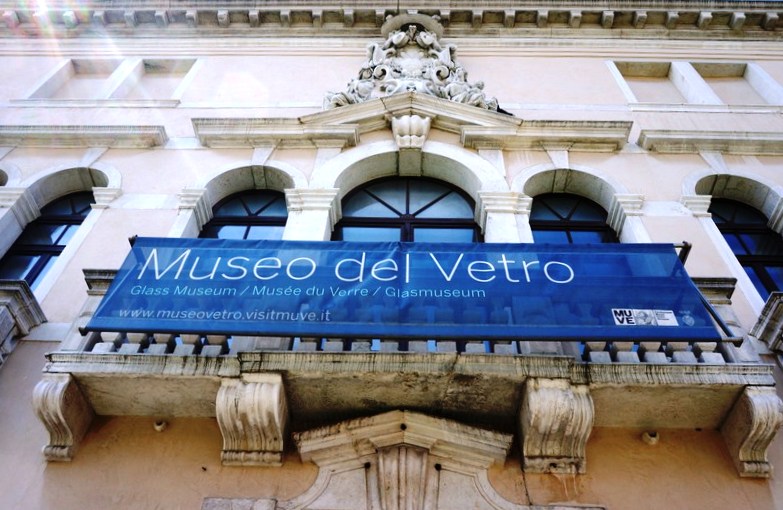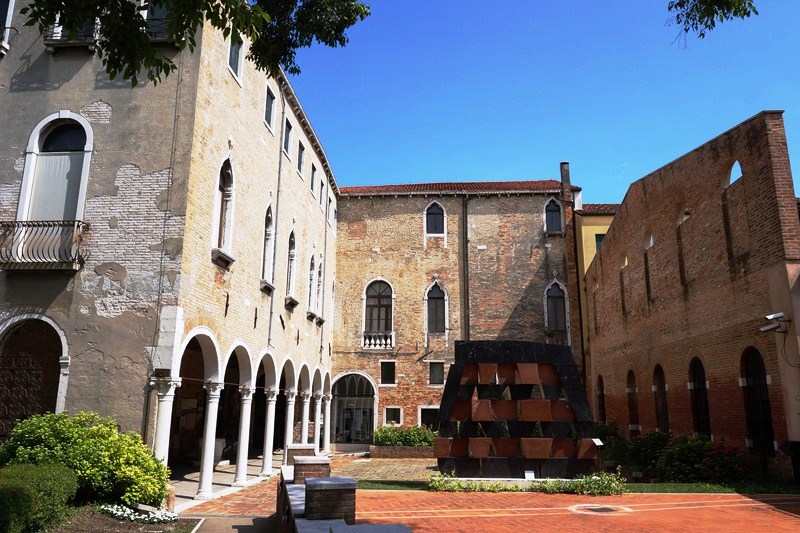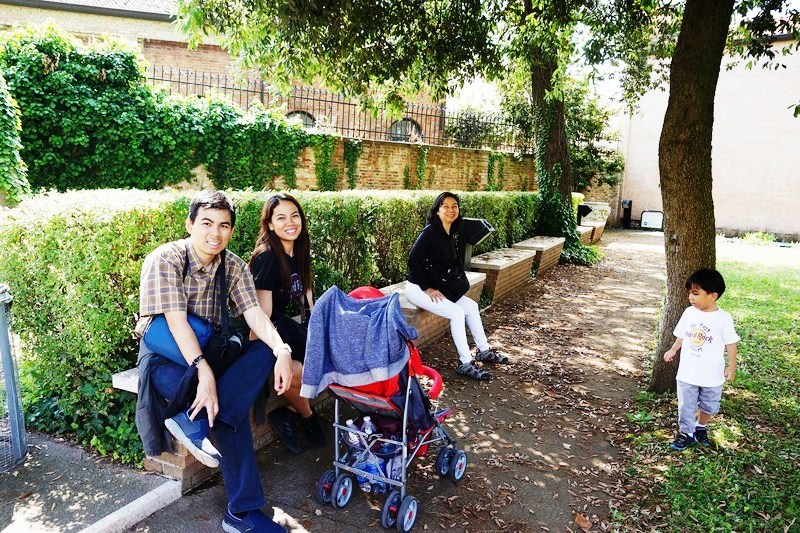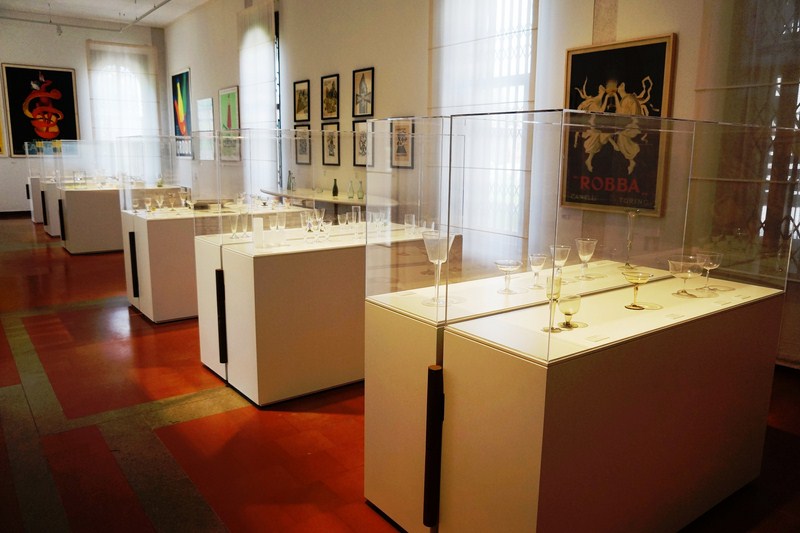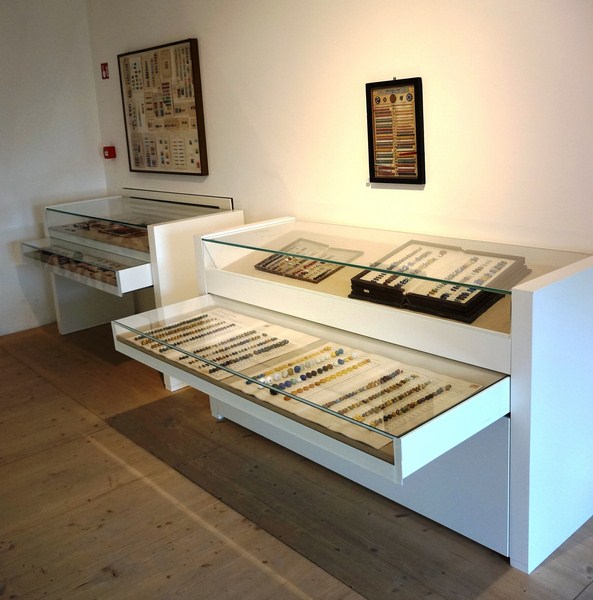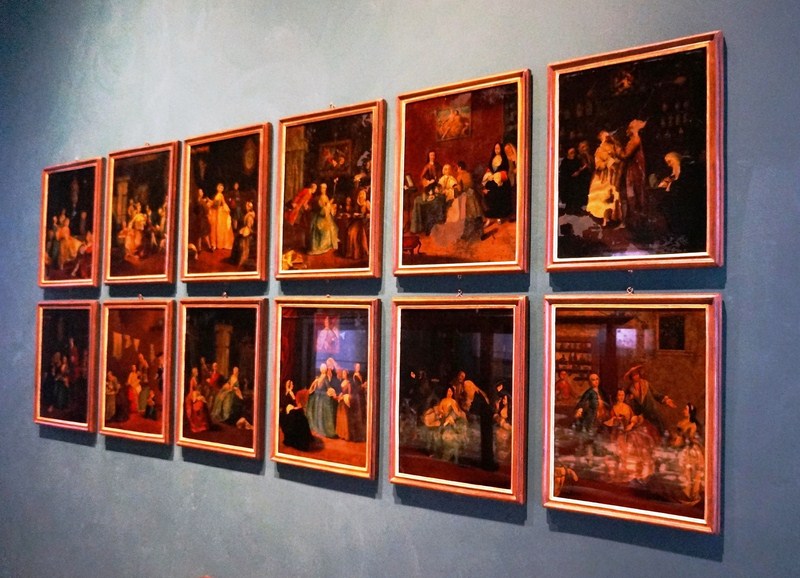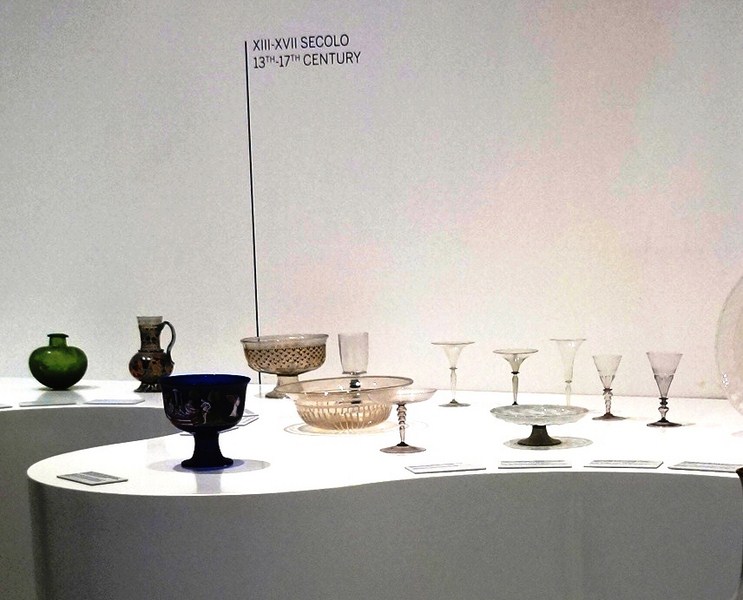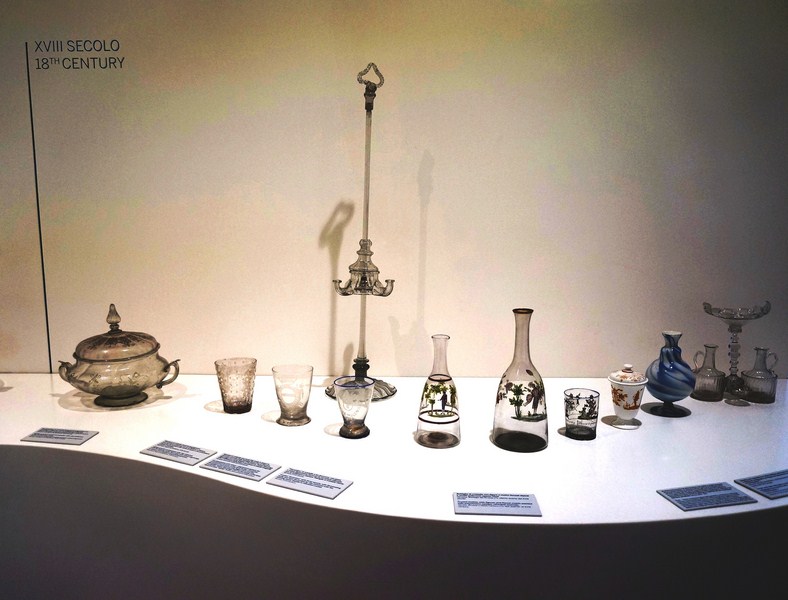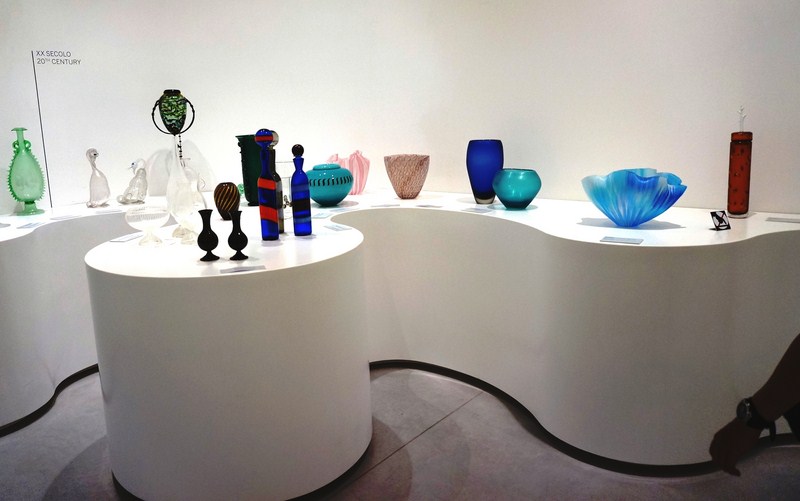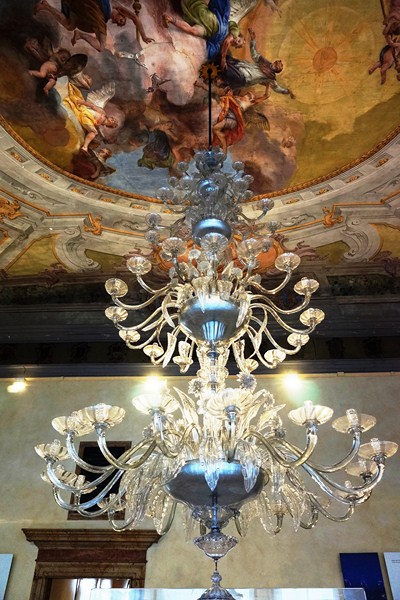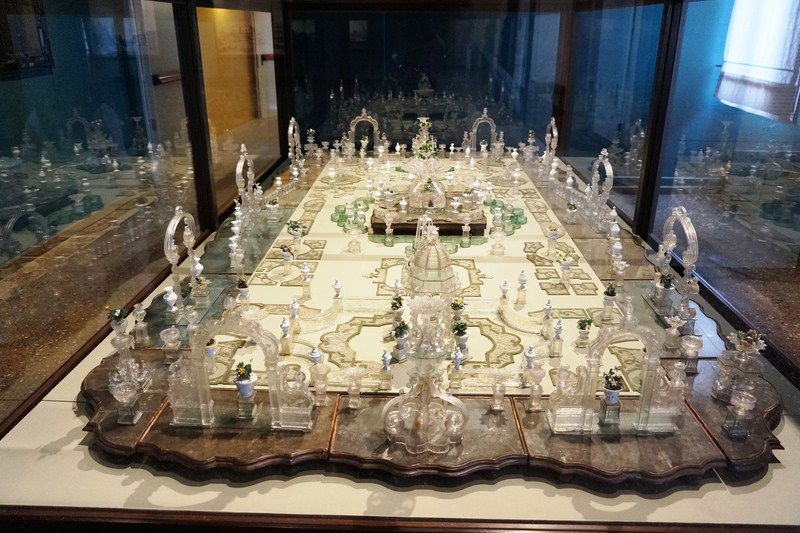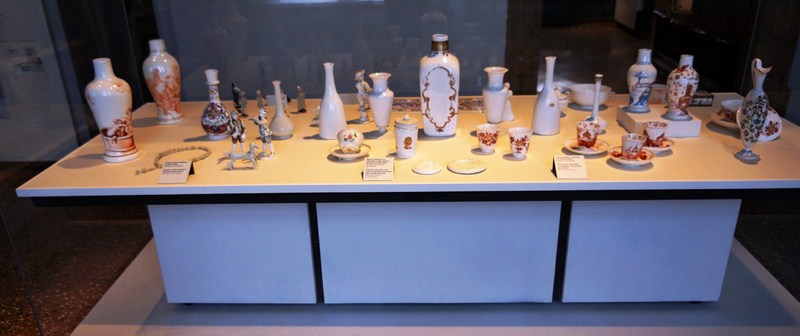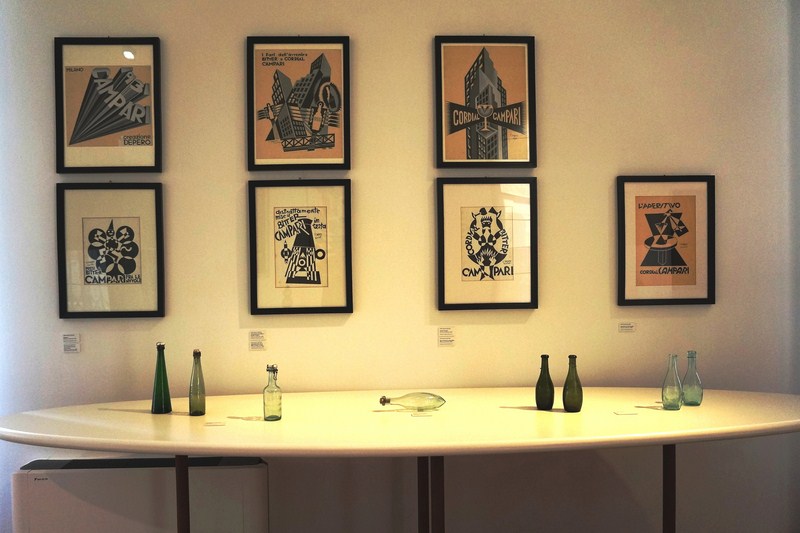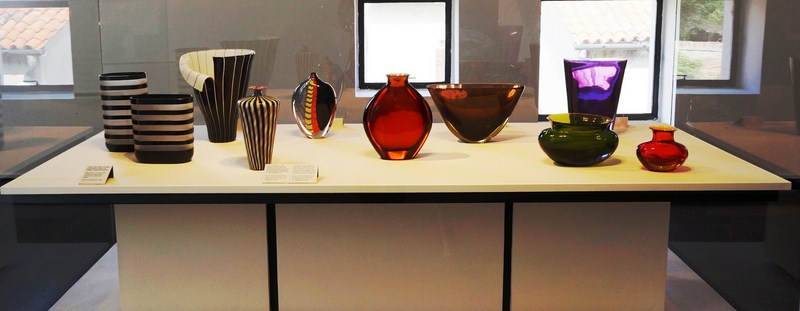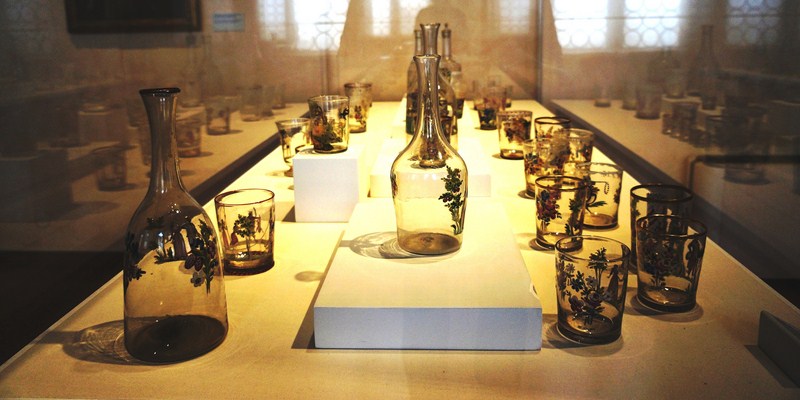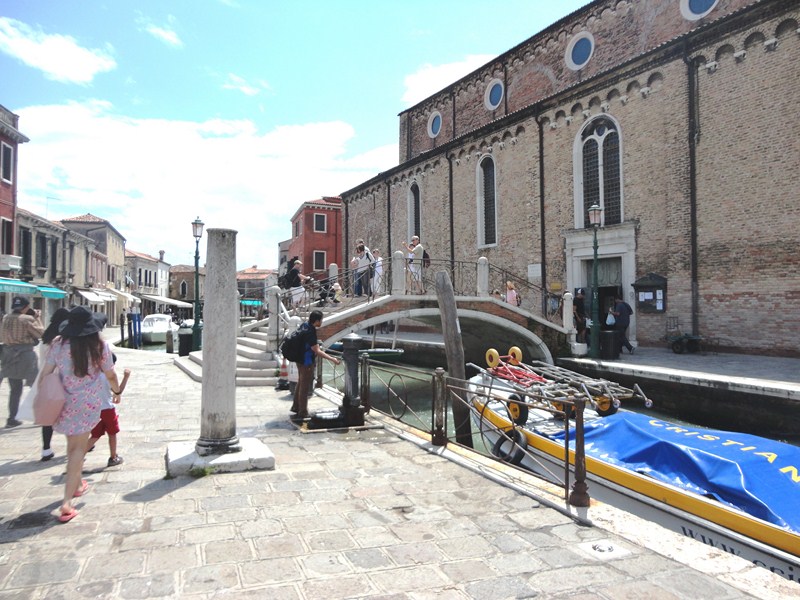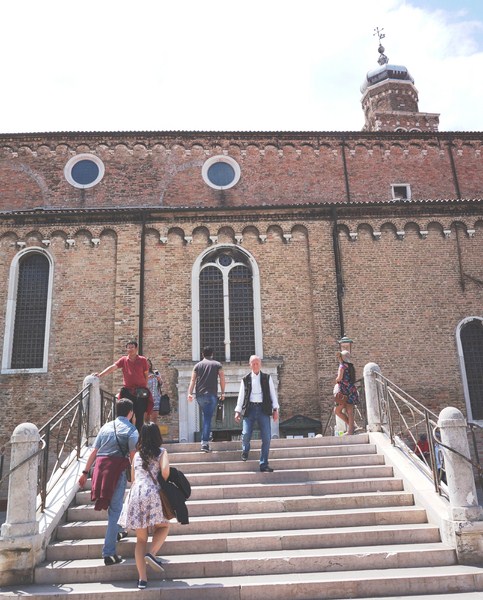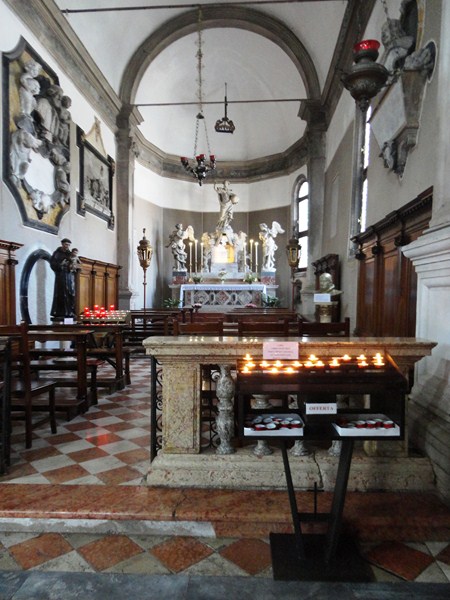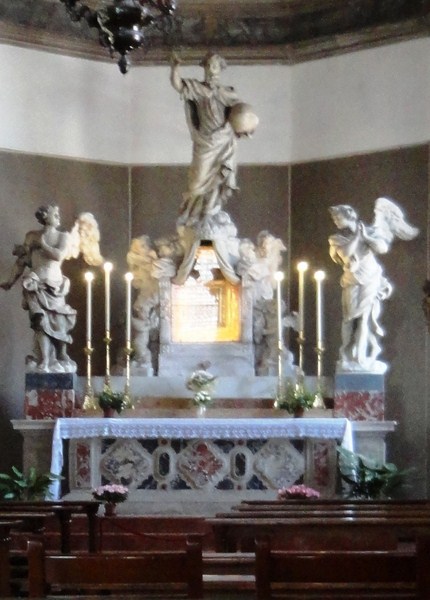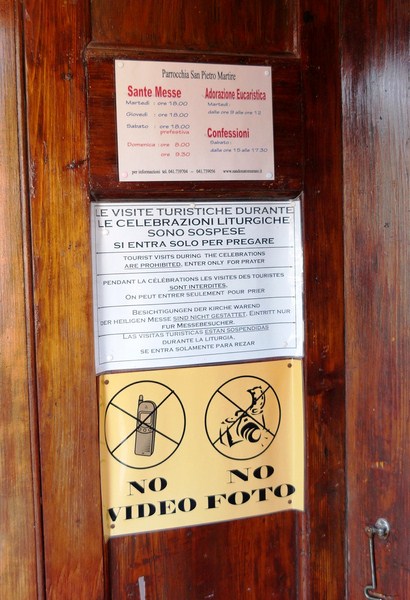The Rialto Bridge (Italian: Ponte di Rialto), one of the four bridges (and the oldest) spanning the 3,800 m. long, S-shaped Grand Canal, is one of the architectural icons of Venice. The dividing line for the the sestieri (districts) of San Marco and San Polo, it is renowned as an architectural and engineering achievement of the Renaissance.
This pedestrian bridge had its beginning in 1181 as a pontoon bridge called the Ponte della Moneta (presumably because of the mint that stood near its eastern entrance) built, at the narrowest point of the canal, by Nicolò Barattieri. In 1255, the development and importance of the Rialto market on the eastern bank, necessitated its replacement by a timber bridge with two inclined ramps, meeting at a movable central section, that could be raised to allow the passage of tall galleys. The connection with the Rialto market eventually led to a change of the bridge’s name. The painting Miracle of the Relic of the Cross at the Ponte di Rialto, by Italian Renaissance artist Vittore Carpaccio, dates back to 1496, the time when the bridge was still in wood.
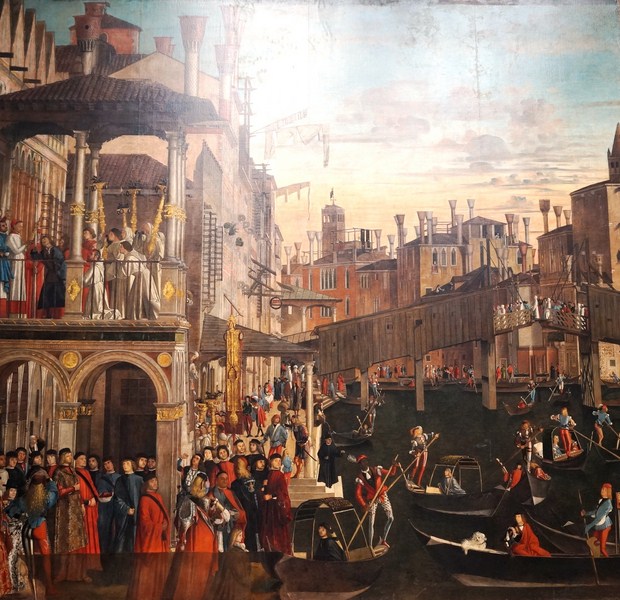
The painting Miracle of the Relic of the Cross at the Ponte di Rialto, by Vittore Carpaccio, can be found at the Gallerie dell’Accademia
During the first half of the 15th century, two rows of shops were built along the sides of the bridge, its rents and taxes bringing an income (which helped maintain the bridge in working order) to the State Treasury. In 1310, it was partly burnt during the revolt led by Bajamonte Tiepolo. In 1444, it collapsed under the weight of a crowd watching a boat parade in celebration of wedding of the Marquis Ferrara. In 1524, the bridge collapsed again.
In 1503, the idea of rebuilding the bridge in stone was first proposed. Over the following decades, several projects were considered. In 1551, the authorities, among other things, requested proposals for the renewal of the Rialto Bridge and plans were offered by famous architects such as Jacopo Sansovino, Palladio and Vignola (Michelangelo was also considered as a designer of the bridge), all involving a Classical approach with several arches (which would hinder the river traffic), and all judged inappropriate to the situation.
The present 48 m. (157 ft.) long and 7.32 m. (24 ft.) high stone arch bridge, designed and built by Swiss-born Venetian architect and engineer Antonio da Ponte (appropriately translated as “Anthony of the Bridge”) and his nephew, Antonio Contino (the architect of the Bridge of Sighs, Venice’s second most talked about bridge), was started in 1588 and completed in 1591.
Similar to the wooden bridge it succeeded, it consisted of a massive single 28.8 m. (94.5 ft.) long span, built on some 6,000 wooden piles driven under each abutment in the soft alluvial soil, with two inclined covered ramps lead up to a central portico. The bed joints of the stones were placed perpendicular to the thrust of the arch. The lower chord of the bridge has a length of 25 m. (83 ft.) and a width of 22.9 m. (75.1 ft.). Stone reliefs on the bridge depict St. Mark, the city’s patron, and St. Theodore and the Annuciation.
Its design was considered so audacious so much so that architect Vincenzo Scamozzi predicted its future ruin. However, the bridge has defied its critics and is now a significant tourist attraction in the city. The bridge has three walkways. Two are located along the outer balustrades while the wider central walkway is lined by two arcades of small shops selling jewelry, linens, Murano glass, and other tourist items.
Rialto Bridge: Sestiere San Polo, 30125 Venice, Italy. As the bridge consists primarily of steps, crossing it is a challenge for tourists with strollers or wheelchairs.
How to Get There: From the train station or the Piazzale Roma or if you’re walking from St. Mark’s Square, simply follow the signs to “Rialto.” From the square, head for the clock tower, cut through the arched passage, and follow the upscale shopping streets (known as the Mercerie) until you reach the Grand Canal, then turn right and walk two blocks to the bridge. Another option is to approach the bridge via the No. 1 vaporetto (water bus) which stops at Rialto on its way up or down the Grand Canal.

